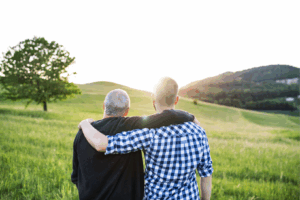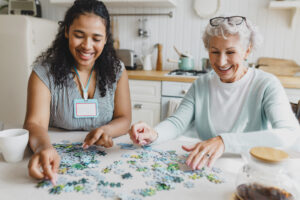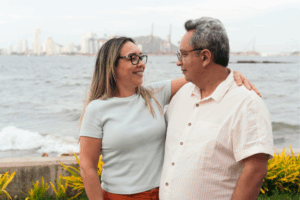Earlier this month, we celebrated Grandparents Day, which took place on Sept. 10. That date also marked the beginning of National Suicide Prevention Week. If these events seem unrelated, brace yourself for bad news.
In the United States, an elderly person commits suicide every 66 minutes. That’s 21.7 senior suicides per day and 7,912 per year among those aged 65 and older. Though older adults make up only 15% of the population, they represent 18% of all deaths by suicide. Double suicides of spouses or partners are most prevalent among the aged.
According to the U.S. Centers for Disease Control, senior citizens are twice as likely to commit suicide as teenagers, and six times more likely to succeed in a suicide attempt. This is because they are less ambivalent about the decision, and they tend to use more lethal means: 72% choose firearms.
Why are our elders killing themselves at such alarming rates? Primarily, the reasons are loneliness and depression.
For older white men—who have significantly higher rates of suicide than any other demographic group—retirement can be the beginning of an increasingly isolated existence. They no longer see their colleagues at work, and they lose the status and routine that came with their paycheck. This loss often leads to emotions they can’t identify and don’t know how to process. A socialized reluctance to admit weakness and ask for help can be exacerbated by an aversion to medical professionals. Add the onset of chronic or mental illness, the death or disability of a spouse, or self-medication through alcohol, and you’ve got a deadly combination.
When I founded the nation’s only accredited crisis intervention program for seniors and disabled adults in 1973, statistics showed that older adults were the most likely age group to commit suicide but represented only a small percentage of calls to suicide hotlines. We discovered that elders weren’t calling crisis lines because they weren’t having a crisis; they were suffering from chronic loneliness and undiagnosed depression. So we created the Friendship Line at Institute on Aging, a “warm line” where seniors can always find a friend who will listen, 24 hours a day, seven days a week.
Over 40 years of listening, we have learned that older adults’ “cry for help” is markedly different than teens’, because depression looks different when we age. Older adults suffering from depression are more likely to be irritable than sad, and to complain about physical ailments that their doctor can’t find a reason for. Whereas young people talk about suicide or say, “I want to die,” older adults are more likely to say, “There’s no place for me,” or “I don’t want to be a burden.” And while we are thankfully more sensitive to the effects of outside pressures on young people, such as bullying and online harassment, we miss clear warning signs with older adults—such as the death of a spouse, the diagnosis of a chronic or mental illness, or a lack of interest in activities they previously enjoyed. Too often, these triggers are viewed as normal aspects of the aging process. And too often, older adults are reluctant to ask for help from friends and family because they don’t want to be perceived as a burden.
That’s why Friendship Line volunteers and staff make and receive more than 12,000 calls every month, providing free counseling, referrals, grief support programs, and well-being checks for tens of thousands of clients in California and beyond. Sadly, the people we reach through the Friendship Line represent only a small fraction of the lonely older adults who need someone to connect with.
Fortunately, there is something we can all do to help. We can familiarize ourselves with the signs of depression among older adults. We can check in more frequently after the loss of a spouse or close friend, a diagnosis of serious illness, or the onset of disability. If a loved one is eating less, staying inside more, or complaining about “not feeling right,” we can encourage them to get screened for depression, or suggest it to their doctor. Medical professionals can help by talking to their aging patients about the health risks of loneliness, which studies show is worse than smoking 15 cigarettes a day.
The good news is, older adults respond as well as anyone to talk therapy and antidepressants. Resources and social activities are available at local senior centers, community libraries, and neighborhood churches. And, of course, the Friendship Line is always open, at 800-971-0016.
So, learn the signs of depression in older adults, listen for them, and lead your loved ones to the resources they need.
And by all means, call your mother.
To learn more about Institute on Aging and our services, contact us today.







